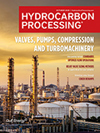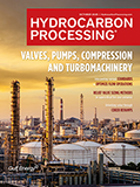Process Control
Siemens, PAS announce partnership to provide industrial control system cybersecurity
Siemens and PAS Global, a provider of industrial control system (ICS) cybersecurity solutions, announced an agreement to provide fleet-wide, real time monitoring for control systems.
Baker Hughes, KBC partner on integrated process, operational software solutions
PARIS — Baker Hughes, a GE company and KBC a wholly owned subsidiary of Yokogawa Electric Corporation, announced a preferred partnership that will provide a combination of process simulation, asset performance management and operational software solutions to the oil and gas industry.
Emerson launches industry-first controller for automation versatility, IIoT-enabled operations
AUSTIN, Texas — Emerson is launching the DeltaV PK Controller, making the advanced automation of its DeltaV distributed control system (DCS) available to fast-growth industries traditionally less reliant on large-scale automation.
Iron poisoning investigations enable opportunities for success
The function of fluid catalytic cracking units (FCCUs) is to maximize profits from a given barrel of oil.
Schneider Electric, Claroty partner to address safety, cybersecurity challenges
NEW YORK — Claroty, in Operational Technology (OT) network protection, and Schneider Electric, the global specialist in energy management and automation, announced that they are partnering to address safety and cybersecurity challenges for the world's industrial infrastructure.
The lost art of proportional band, and the accidental art of performance monitoring
Most control engineers know that proportional band and controller gain are largely interchangeable terms—both terms refer to the proportional setting of a proportional-integral-derivative (PID) controller and are commonly used by control system manufacturers.
Identify the cause of liquid maldistribution inside packed beds
Diagnosing liquid maldistribution problems inside packed beds that can cause mass transfer efficiency loss is a challenge to process engineers.
Automation Strategies: Navigating automation in oil and gas—Lessons learned from other industries
In today’s economy, industrial automation has become absolutely essential for refiners, petrochemical producers and pipeline owners looking to maintain profitability and competitive advantage as market pressures bear down on them.
Quanta Services acquires services company Stronghold
HOUSTON — Quanta Services, Inc. announced that it has completed the acquisition of Stronghold, Ltd. and Stronghold Specialty, Ltd., a specialized services company that provides high pressure and critical path solutions to the downstream and midstream energy markets.
Honeywell invests in cyber security innovation center in Asia Pacific
SINGAPORE — Honeywell Process Solutions, with the support of the Singapore Economic Development Board (EDB), will establish a new industrial cyber security center of excellence (COE) for Asia Pacific in Singapore. The COE will feature a cyber security research and development lab, an advanced training facility and a security operations center that provides managed security services.

- Verso Energy awards FEED contract to Rely for the DEZiR eSAF project 11/17
- Iran confirms seizure of tanker with petrochemical cargo headed for Singapore 11/17
- Asian gasoline margin spikes to highest since August 2023 11/14
- Lukoil-Moldova grants free use of airport fuel terminal to government amid U.S. sanctions 11/14
- Croatia rejects Russian vacuum gasoil cargo after U.S. sanctions 11/14
- Bulgaria wins UK sanctions reprieve on refinery, petrol stations 11/14




